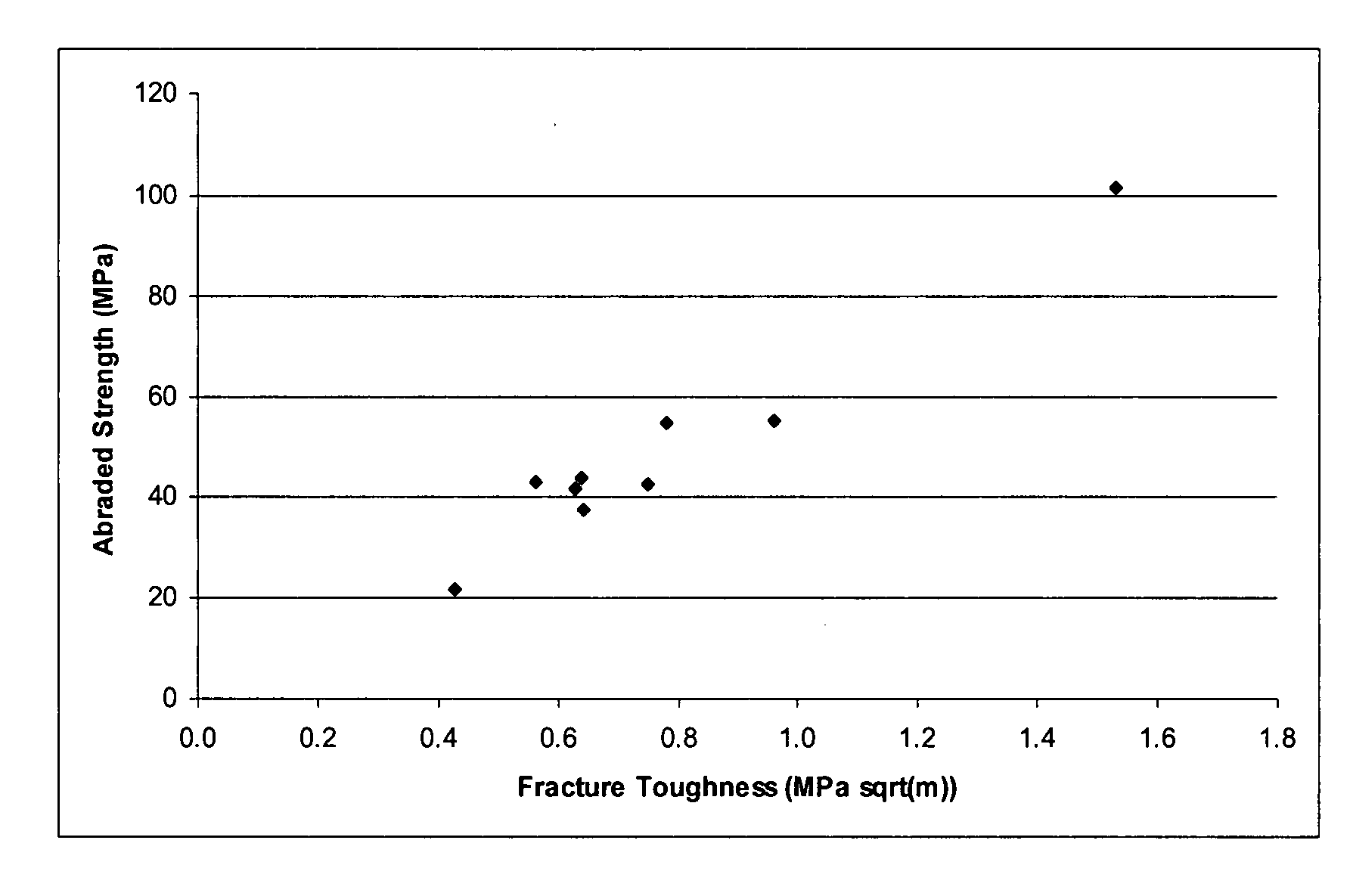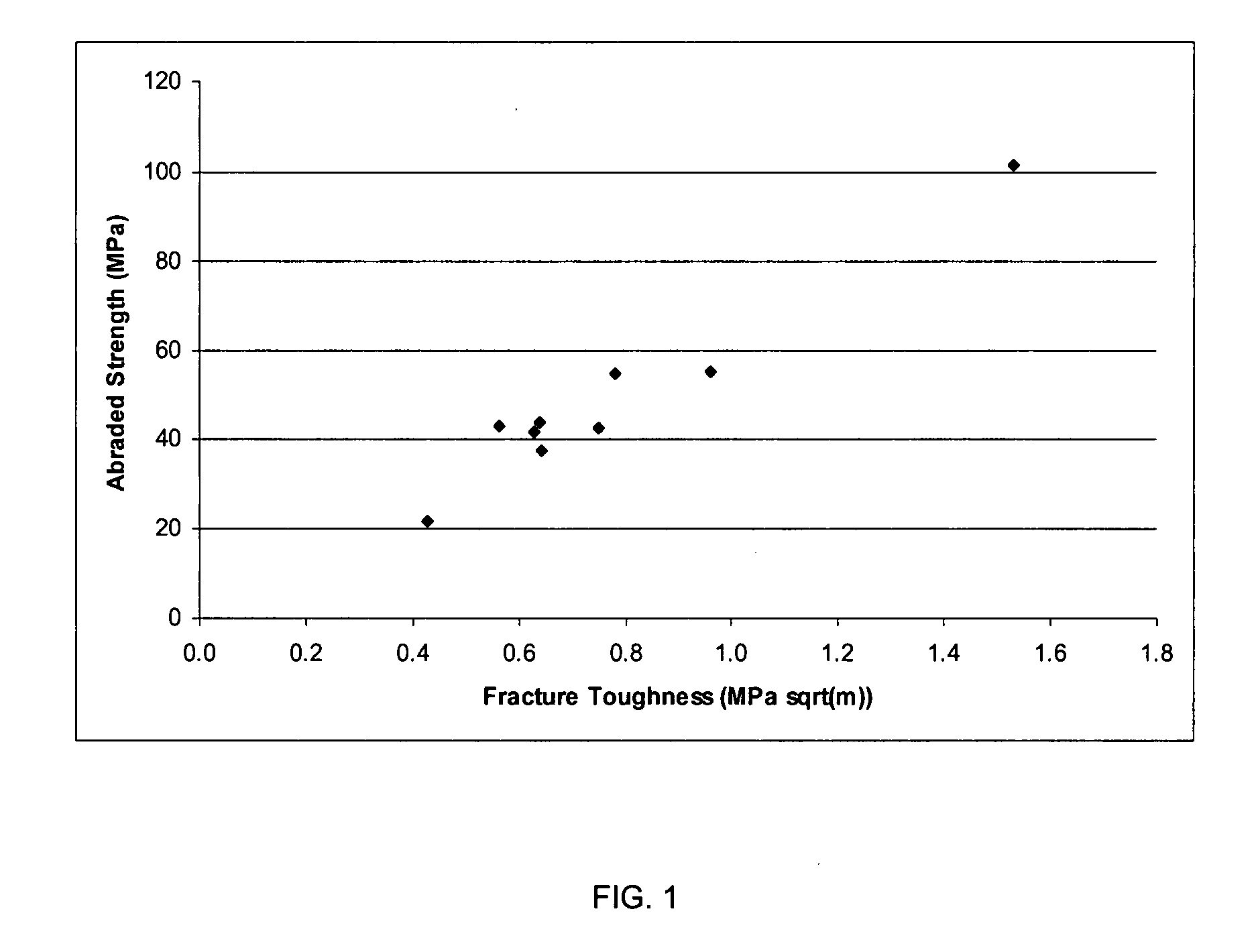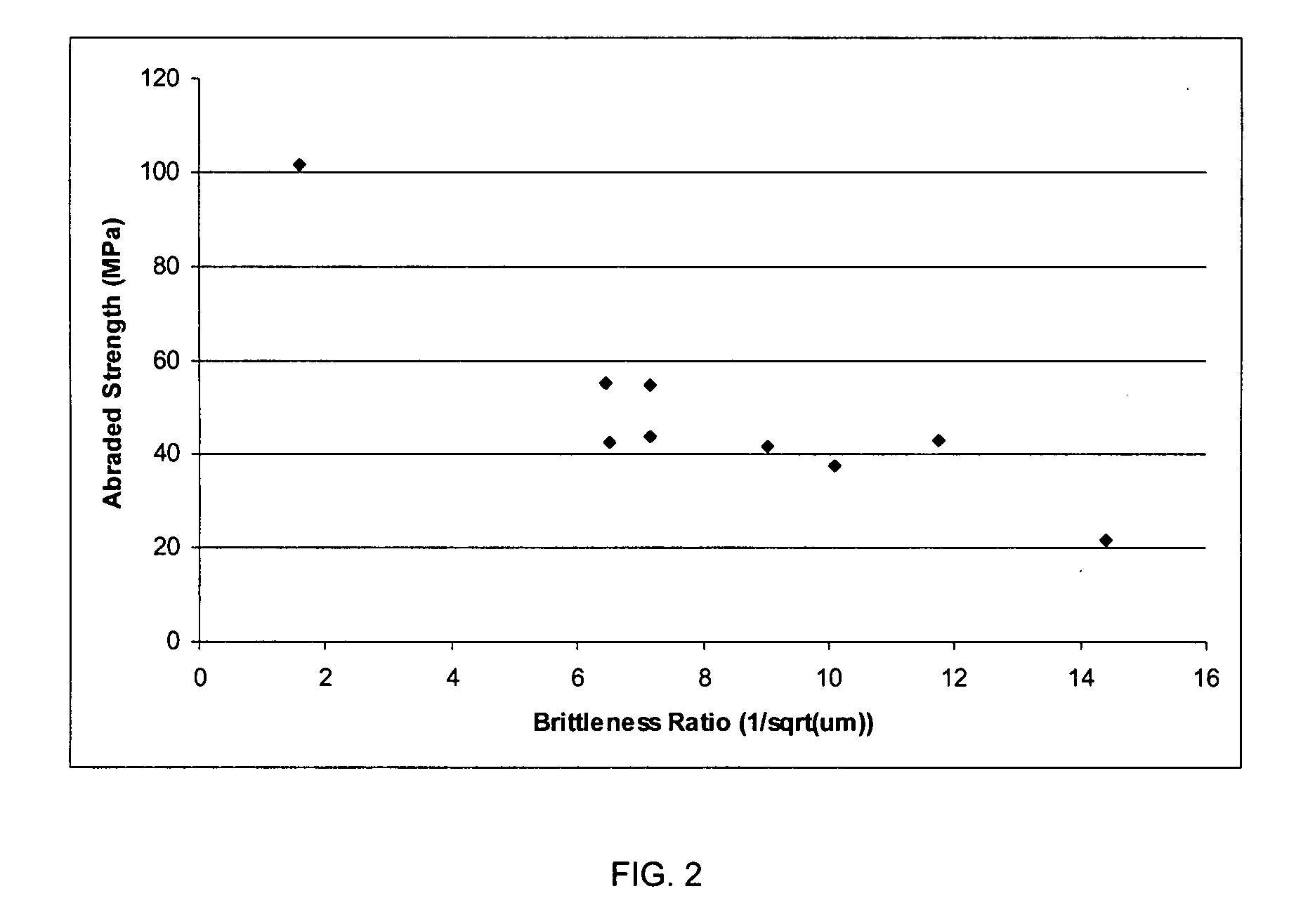Mechanically flexible and durable substrates and method of making
a flexible, durable substrate technology, applied in the direction of organic semiconductor devices, synthetic resin layered products, chemistry apparatus and processes, etc., can solve the problems of glass materials typically selected that exhibit poor mechanical stability, device failure or a reduction in the lifetime of a device, and permeability and/or device failur
- Summary
- Abstract
- Description
- Claims
- Application Information
AI Technical Summary
Benefits of technology
Problems solved by technology
Method used
Image
Examples
example 1
Determination of Substrate Properties
[0047]In a first example, modulus, hardness, fracture toughness, and brittleness ratios were determined for a variety of materials, including ceramics, glass ceramics, silica glasses, phosphate glasses, and other compositions, as detailed in Table 2, below. Various materials are included to illustrate the physical properties that are suitable for use in substrates in accordance with the present invention, although not all of the materials identified in Table 2 can readily form a glass. Modulus values refer to nano-indentation measurements. Hardness values refer to nano-indentation, Knoop, and / or Vickers measurements, wherein an indentation is made in the substrate by, for example, a pyramidal shaped diamond. Fracture toughness values refer to indentation and / or Chevron notch measurements. Brittleness ratio values refer to measurements of hardness and fracture toughness, as described above. Nano-indentation, Knoop hardness, Vickers hardness, and C...
example 2
Abraded Strength
[0050]In a second example, abraded strength values were determined for some of the materials described in Example 1. The experimental materials were selected from drastically differing composition families in order to illustrate the relationship between physical properties. Samples of selected materials were cut and polished to approximately 1 inch by 1 inch pieces, approximately 1 mm thick. The samples were subsequently abraded on one side with 150J sandpaper, after which ring-on-ring biaxial strength was tested with the abraded sample side being put in tension. For this strength test, the load ring diameter was typically 0.25 inch and the support ring diameter was typically 0.50 inch. A test speed was typically 0.05 inch per minute.
[0051]FIGS. 1-2 illustrate the resulting abraded strength values as a function of fracture toughness and brittleness ratio, respectively. FIG. 1 illustrates a trend of increasing abraded strength with increasing fracture toughness. Simil...
PUM
| Property | Measurement | Unit |
|---|---|---|
| thickness | aaaaa | aaaaa |
| bend radius | aaaaa | aaaaa |
| bend radius | aaaaa | aaaaa |
Abstract
Description
Claims
Application Information
 Login to View More
Login to View More - R&D
- Intellectual Property
- Life Sciences
- Materials
- Tech Scout
- Unparalleled Data Quality
- Higher Quality Content
- 60% Fewer Hallucinations
Browse by: Latest US Patents, China's latest patents, Technical Efficacy Thesaurus, Application Domain, Technology Topic, Popular Technical Reports.
© 2025 PatSnap. All rights reserved.Legal|Privacy policy|Modern Slavery Act Transparency Statement|Sitemap|About US| Contact US: help@patsnap.com



